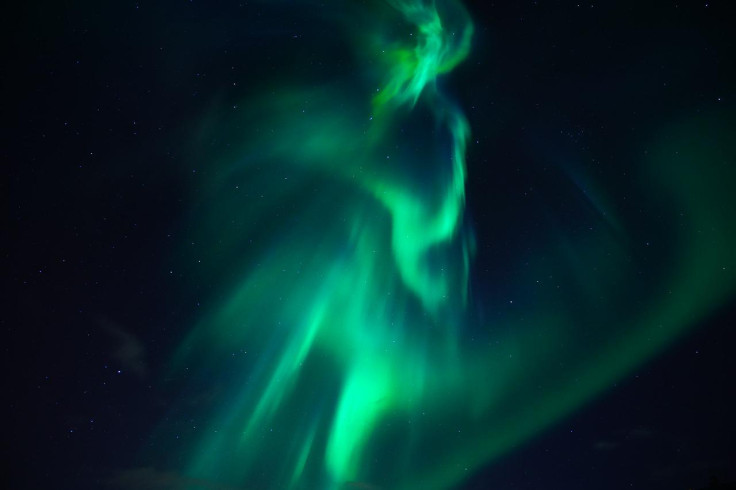Geomagnetic Storm: When, Where To Watch The Northern Lights, How To See Them Clearly
Parts of the U.S. can witness the sky put up a dazzling show due to a massive solar flare heading toward the Earth.
A series of bursts erupted from the sun Sunday is expected to reach Earth in the form of a geomagnetic storm, making northern lights appear much further south this time, according to CBS News.
The National Oceanic and Atmospheric Administration (NOAA) had issued a geomagnetic storm watch from Wednesday to Friday due to coronal high-speed stream (CH HSS) and coronal mass ejection (CME) influences.
"The resultant elevated and disturbed solar wind field is thought to be enough for potential G1 (Minor) geomagnetic storm conditions on 17 Aug. Geomagnetic responses are likely to escalate to G3 (Strong) conditions on 18 Aug due to the arrival at or near Earth of multiple coronal mass ejections (CMEs) that have departed the Sun since 14 Aug," NOAA said in a statement.
G1-G3 Watches are in effect for 17-19 August, 2022 due to likely CH HSS and CME influences. There is too much information to tweet about this activity - so please visit our webpage story at https://t.co/SitaSD3blc for all the information to keep properly informed. pic.twitter.com/E9K21u1TnJ
— NOAA Space Weather (@NWSSWPC) August 16, 2022
Due to the eruptions from the sun, the storm could shift the aurora borealis, also known as the northern lights, further south, making it visible to people in parts of Canada and the northern parts of the U.S.
It could be possible for residents to see the sky light up from parts of Washington, Oregon, Idaho, Montana, Wyoming, North Dakota, South Dakota, Nebraska, Iowa, Minnesota, Wisconsin, Michigan, Illinois, Indiana, New York, Massachusetts, Maine, New Hampshire and Vermont, according to The Thrillist.
Residents from these states can catch the beautiful colors of the aurora from Thursday night to Friday.
Since it is sometimes difficult to see them with the naked eye, "[your] best bet is to take a digital camera (DSLR or advanced smartphones) on a tripod and take 3 to 5 second exposures towards the northern horizon," Jim Todd of Oregon Museum of Science and Industry (OMSI) said, according to KOIN.
"If the picture shows some shades of green to red curtain-like images, chances are the auroras are active. Sometimes the aurora's low and faint above the northern horizon," Todd added.
One should choose areas that are less polluted and with clear skies to get the best views.

© Copyright IBTimes 2025. All rights reserved.






















